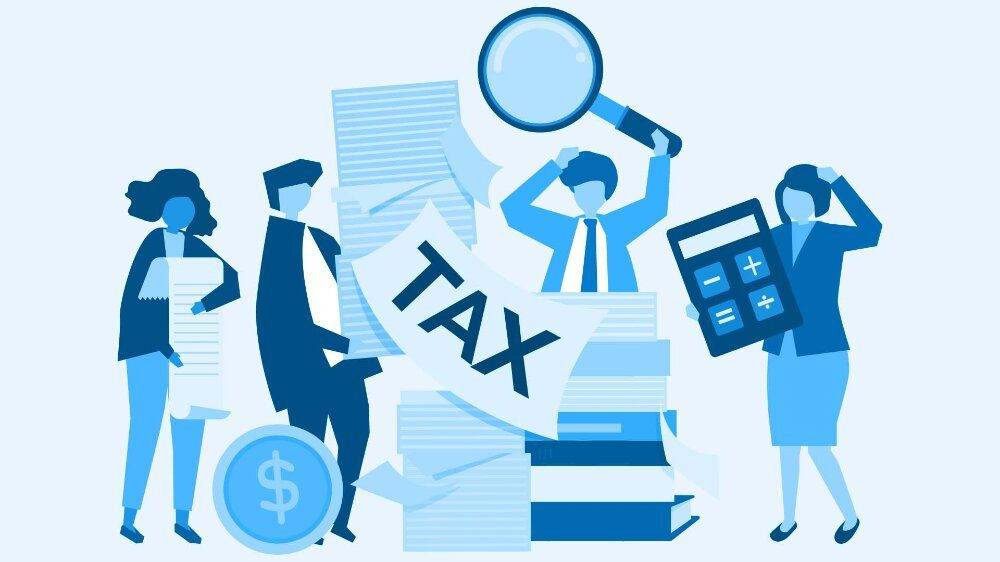Every working adult, at one point or another, has seen the phrase ‘federal income tax‘ on their paystub. But what does it really mean and how does it affect your earnings? In the simplest terms, federal income tax is the portion of your income that is withheld and remitted to the federal government.
These funds serve as the fuel for the engine of public services, going towards everything from maintaining national defense and healthcare to education and the upkeep of national parks.
Navigating the ins and outs of income taxes can be daunting, especially given the intricate details and complexities surrounding the different brackets, rates, and deductions. Despite this complexity, understanding your federal income tax is a crucial part of financial literacy.
This knowledge gives you a clear picture of where your hard-earned money goes, helps you anticipate your take-home pay, and also assists in effective budgeting and financial planning.
In this article, we’ll unravel the mystery behind federal income tax as it appears on your paystub. We’ll discuss everything from the basics of what federal income tax is, the mechanics of federal income tax rates and brackets, to how to determine what percentage of your income goes to federal income tax, and the importance of federal income tax exemptions.
So, whether you’re a seasoned tax payer or just received your first paystub, this article is designed to give you an easy-to-understand overview of federal income tax.
The ABCs of Federal Income Tax

At its core, the federal income tax is a progressive system, implemented and maintained by the U.S. government. This system is characterized by an increasing tax rate that correlates with an increase in income. This structure is designed to distribute tax burden more equitably across the population, ensuring those who earn more contribute more towards public spending.
The system is divided into seven distinct tax brackets, which range from 10% at the lowest, up to 37% at the highest, as of the last update in 2021. These rates are not static; they’re frequently adjusted to keep pace with inflation and can be altered as part of new legislative decisions.
Each bracket corresponds to a specific income range, and the rate applicable to you depends on where your income falls within these ranges.
However, understanding the federal income tax system is not just about knowing the tax rates. It’s also about comprehending how your income is classified, the deductions you’re entitled to, and the difference between gross and taxable income.
And perhaps most importantly, it involves recognizing that you don’t pay the same rate on all your income. Instead, different portions of your income are taxed at different rates, depending on the tax bracket they fall into. This is known as a marginal tax system.
Therefore, while understanding the federal income tax system may seem complex, it is a vital step towards achieving financial literacy.
By gaining a grasp of how the federal income tax works, you’re arming yourself with the knowledge to better manage your finances and potentially maximize your take-home pay.
The Breakdown: Where does Your Money Go?
On a regular basis, when your paystub arrives, you’ll see a specific deduction labeled ‘federal income tax.’ But what does this deduction contribute towards, and why is it necessary? Simply put, the amount you see as federal income tax on your paystub represents your personal contribution to the functioning of the U.S. government.
This money is funneled towards a vast array of government-funded services, including defense, healthcare, education, social security, and the maintenance and development of infrastructure.
It’s important to note that the federal income tax isn’t a flat rate deduction from your total income. The U.S. income tax system operates on a progressive basis. This means that the percentage you contribute increases with your income, but only the income within each tax bracket is taxed at the corresponding rate.
Let’s illustrate this with an example. Suppose you’re a single filer, and your taxable income falls into the 24% tax bracket. This does not mean that 24% of your total income goes towards federal income tax. Instead, the 24% tax rate only applies to the portion of your income that falls within the bounds of that specific bracket.
The rest of your income, falling in lower brackets, is taxed at the corresponding lower rates.
Understanding where your money goes is key to financial empowerment. By being aware of the role your contributions play in the larger economic system, you can better appreciate the importance of each deduction on your paystub.
This understanding also allows you to better manage your financial affairs, set realistic budget expectations, and avoid unpleasant surprises during the tax season.
What Percentage is Your Federal Income Tax?

Determining the percentage of your income that goes towards federal income tax isn’t as straightforward as it may seem. Your federal income tax rate isn’t a one-size-fits-all figure, and it’s not just about your gross income.
In fact, several factors come into play, including your income level, your filing status, and the current federal income tax brackets.
Your ‘taxable income’ is a crucial term here. This refers to your gross income adjusted after accounting for federal income tax exemptions, deductions, and credits. In other words, not all of your income is subjected to taxation.
There are numerous provisions in the tax code, such as standard or itemized deductions, tax credits, and exemptions that can significantly reduce the amount of your income that’s subject to tax.
Once these adjustments are made, the resulting taxable income is what gets subjected to the tax rates established by the federal income tax brackets. The progressive nature of these brackets means that different portions of your income will be taxed at different rates, depending on which bracket they fall into.
It’s important to stay updated with the current tax brackets and rates as they can change from year to year. These adjustments are typically made to account for inflation, but can also be influenced by legislative changes.
Keeping track of these updates can help ensure that you’re not caught off guard when it’s time to file your tax return.
In summary, determining what percentage of your income goes to federal income tax requires an understanding of both your personal financial situation and the current tax regulations.
By staying informed and planning accordingly, you can navigate the tax season with confidence and ease.
Making Sense of Your Paystub
Your paystub is more than just a slip of paper showcasing your earnings; it’s a detailed financial document that outlines exactly how much of your income goes where. It’s an essential tool for understanding your personal finances, and its importance cannot be overstated.
However, if you’re like most people, chances are you find the numerous lines of figures and terminology on your paystub confusing. The key to unlocking this mystery lies in understanding each element, and the federal income tax is one of its fundamental components.
The section marked ‘federal income tax’ shows the amount that has been deducted from your gross pay for the pay period and contributed to the federal government. But remember, this isn’t calculated on your total income.
After the consideration of federal income tax exemptions, credits, and deductions, your adjusted or ‘taxable’ income is used to determine your tax contribution.
Other elements on your paystub will also include deductions for social security and Medicare (FICA taxes), state taxes if applicable, and any other deductions specific to your employment situation, such as retirement plan contributions or health insurance premiums.
Understanding your paystub can feel like you’re deciphering a foreign language. However, with a basic comprehension of terms like ‘gross income’, ‘net income’, ‘taxable income’, ‘federal income tax’, and others, it becomes significantly simpler.
This knowledge can empower you to take control of your financial health, enable you to detect any errors, and help plan your budget more effectively.
Remember, the more informed you are about your paystub, the more control you have over your finances. So take the time to familiarize yourself with your paystub – your financial future will thank you for it.
Conclusion
In essence, the federal income tax isn’t just a deduction on your paystub; it’s a crucial financial element that directly impacts your paycheck and your personal budget. It’s an integral part of the larger economic machinery, contributing to the funding of essential government services that benefit us all.
Understanding how the federal income tax system works, including tax rates, brackets, and exemptions, can provide valuable insights into your financial landscape. It helps decode your paystub, enabling you to track your income and deductions more accurately.
Furthermore, it empowers you to plan your financial future with more precision and confidence, and can even help you make the most of potential tax savings.
In the end, understanding your federal income tax is not just about making sense of the deductions on your paycheck. It’s about gaining financial literacy and building a strong foundation for better money management. It’s about being in control of your financial journey and taking proactive steps towards financial stability and freedom.
As we navigate the ever-evolving world of personal finance, it’s vital to stay informed and proactive.
So continue to ask questions, seek out information, and strive to understand the inner workings of your finances. The more knowledge you have, the better prepared you’ll be to navigate financial challenges and opportunities that come your way.
FAQ
What is federal income tax on paystub?
Federal income tax on your paystub is the amount deducted from your earnings and paid to the federal government. It’s calculated based on your taxable income and the current tax bracket you fall into.
How do I find my taxable income on my pay stub?
Your taxable income is not directly listed on your paystub. It’s calculated by subtracting total deductions, which include federal income tax, state taxes, FICA taxes, and any pre-tax benefits, from your gross income.
Why are there no federal taxes on my paystub?
If there are no federal taxes on your paystub, it could be due to your exemptions, allowances, or deductions reducing your taxable income to zero. Another reason might be an error in your W-4 form where you’ve claimed exemption from withholding.
Is income tax found on a paystub?
Yes, income tax is found on your paystub. It’s listed as a deduction and is categorized into federal and state income tax, each showing the respective amount withheld from your earnings during that pay period.








